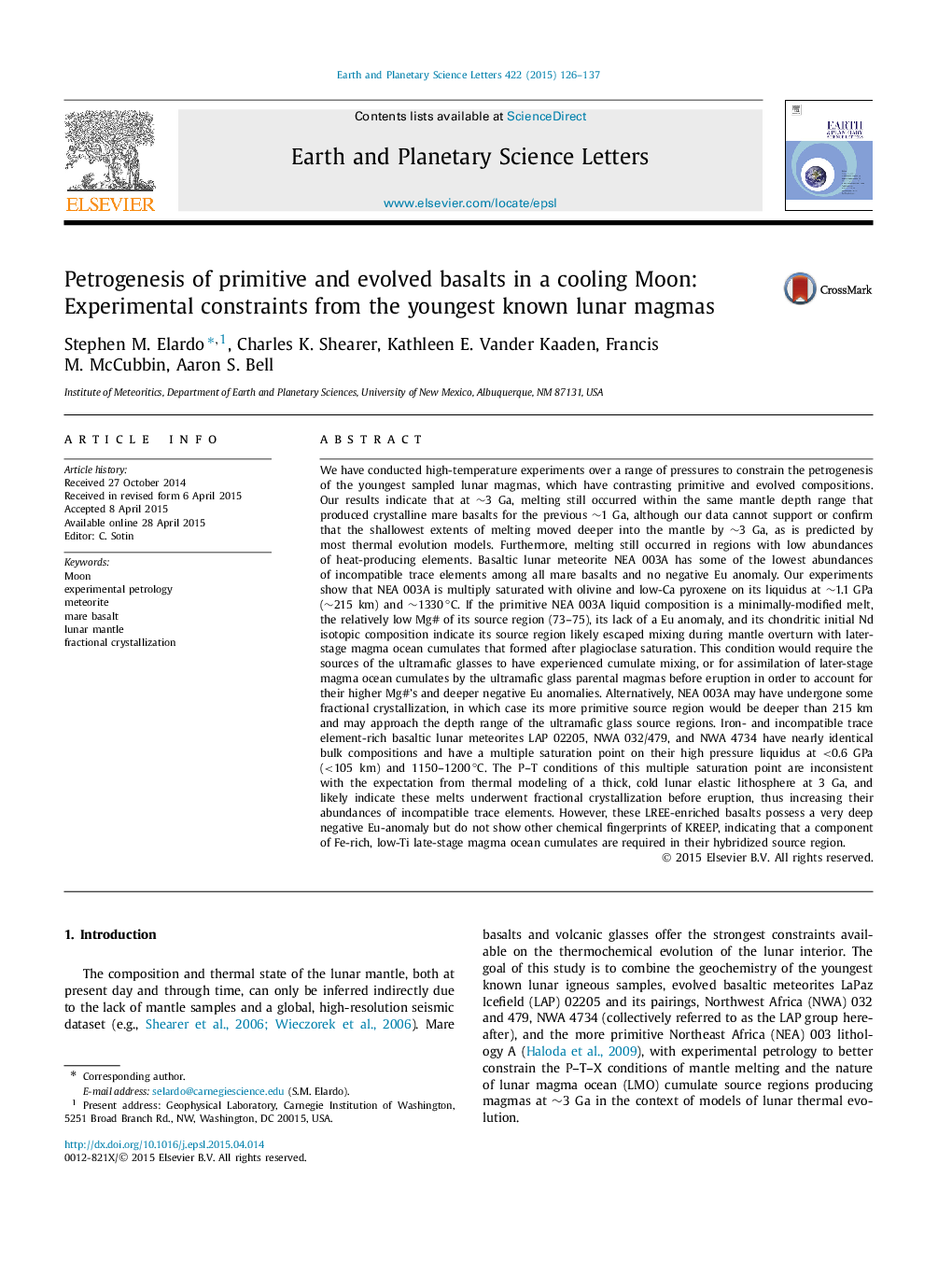| کد مقاله | کد نشریه | سال انتشار | مقاله انگلیسی | نسخه تمام متن |
|---|---|---|---|---|
| 6428336 | 1634734 | 2015 | 12 صفحه PDF | دانلود رایگان |
- NEA 003A and the LAP group represent the youngest known igneous samples from the Moon.
- NEA 003A is a primitive basalt poor in ITEs; The LAP group basalts are evolved with high ITE abundances.
- The liquidus multiple saturation point for NEA 003A is at 1.1 GPa, 1330â°C; <0.55 GPa and 1150-1200â°C for LAP group.
- NEA 003A may be derived from a source region that escaped mixing during cumulate overturn.
- The LAP basalts experienced fractional crystallization, but require late-stage LMO cumulates in their source.
We have conducted high-temperature experiments over a range of pressures to constrain the petrogenesis of the youngest sampled lunar magmas, which have contrasting primitive and evolved compositions. Our results indicate that at â¼3 Ga, melting still occurred within the same mantle depth range that produced crystalline mare basalts for the previous â¼1 Ga, although our data cannot support or confirm that the shallowest extents of melting moved deeper into the mantle by â¼3 Ga, as is predicted by most thermal evolution models. Furthermore, melting still occurred in regions with low abundances of heat-producing elements. Basaltic lunar meteorite NEA 003A has some of the lowest abundances of incompatible trace elements among all mare basalts and no negative Eu anomaly. Our experiments show that NEA 003A is multiply saturated with olivine and low-Ca pyroxene on its liquidus at â¼1.1 GPa (â¼215 km) and â¼1330â°C. If the primitive NEA 003A liquid composition is a minimally-modified melt, the relatively low Mg# of its source region (73-75), its lack of a Eu anomaly, and its chondritic initial Nd isotopic composition indicate its source region likely escaped mixing during mantle overturn with later-stage magma ocean cumulates that formed after plagioclase saturation. This condition would require the sources of the ultramafic glasses to have experienced cumulate mixing, or for assimilation of later-stage magma ocean cumulates by the ultramafic glass parental magmas before eruption in order to account for their higher Mg#'s and deeper negative Eu anomalies. Alternatively, NEA 003A may have undergone some fractional crystallization, in which case its more primitive source region would be deeper than 215 km and may approach the depth range of the ultramafic glass source regions. Iron- and incompatible trace element-rich basaltic lunar meteorites LAP 02205, NWA 032/479, and NWA 4734 have nearly identical bulk compositions and have a multiple saturation point on their high pressure liquidus at <0.6 GPa (<105 km) and 1150-1200â°C. The P-T conditions of this multiple saturation point are inconsistent with the expectation from thermal modeling of a thick, cold lunar elastic lithosphere at 3 Ga, and likely indicate these melts underwent fractional crystallization before eruption, thus increasing their abundances of incompatible trace elements. However, these LREE-enriched basalts possess a very deep negative Eu-anomaly but do not show other chemical fingerprints of KREEP, indicating that a component of Fe-rich, low-Ti late-stage magma ocean cumulates are required in their hybridized source region.
Journal: Earth and Planetary Science Letters - Volume 422, 15 July 2015, Pages 126-137
